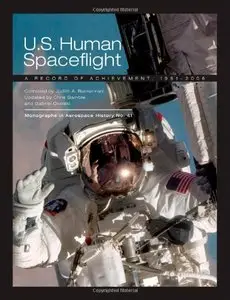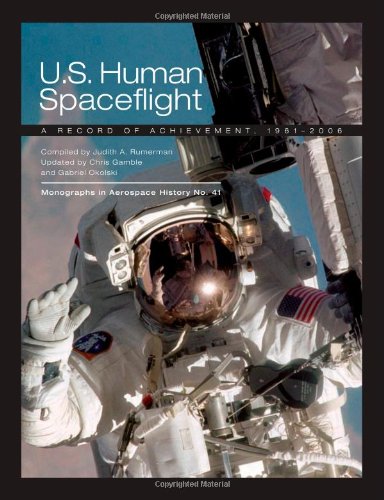U.S. Human Spaceflight: A Record of Achievement, 1961-2006 by Chris Gamble
English | Apr 8, 2008 | ISBN: 147002733X | 100 Pages | PDF | 5.3 MB
English | Apr 8, 2008 | ISBN: 147002733X | 100 Pages | PDF | 5.3 MB
Monographs in Aerospace History; No. 41; This monograph is an updating of U.S. Human Spaceflight: A Record of Achievement, 1961-1998 (Monograph in Aerospace History No. 9, July 1998), compiled by Judith A. Rumerman More than 45 years after the Mercury astronauts made their first brief forays into the new ocean of space, Earth orbit has become a busy arena of human activity. In that time, more than 300 people have traveled into orbit on U.S. spacecraft. The first astronauts went along stuffed into capsules barely large enough for their bodies, eating squeezetube food and peering out at Earth through tiny portholes. Their flights lasted only a matter of hours. Today, we routinely launch seven people at a time to spend a week living, working, and exploring aboard the Space Shuttle. In addition to regular launches, crew members from various nations keep a permanent human presence aboard the International Space Station (ISS). The history of spaceflight has seen not only an increase in the numbers of people traveling into orbit, but also marked improvements in their vehicles. Each successive spacecraft, from Mercury through Apollo and the Space Shuttle, has been larger, more comfortable, and more capable. Scientists working inside the Shuttle's Spacelab have many of the comforts of a laboratory on Earth, none of which were available when human spaceflight first began. Some projects, like Apollo, produced stunning firsts or explored new territory. Others notably, Skylab and the Space Shuttle advanced our capabilities by extending the range and sophistication of human operations in space. Both kinds of activity are vital to establishing a permanent human presence off Earth. Almost 50 years after the dawn of the age of spaceflight, we are learning not just to travel into space, but also to live and stay there. That challenge ensures that the decades to come will be just as exciting as the past decades have been.



